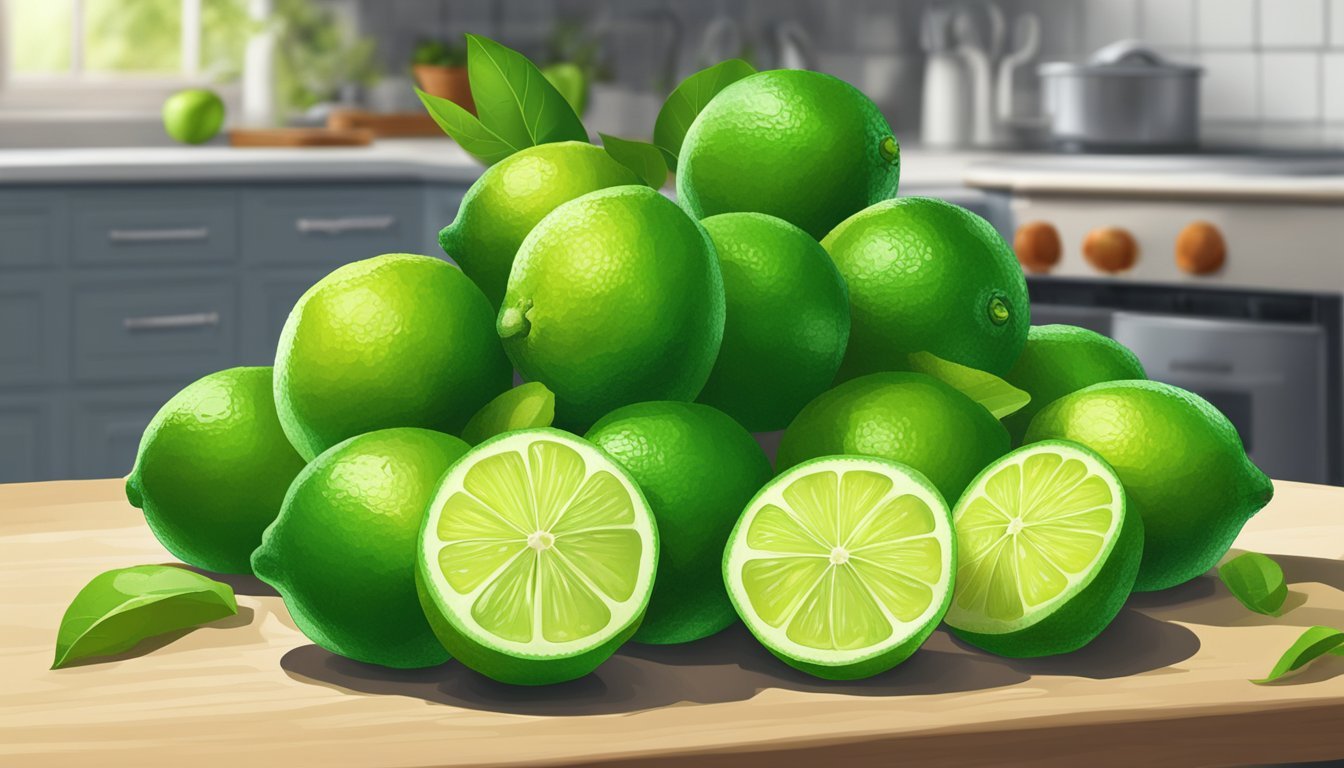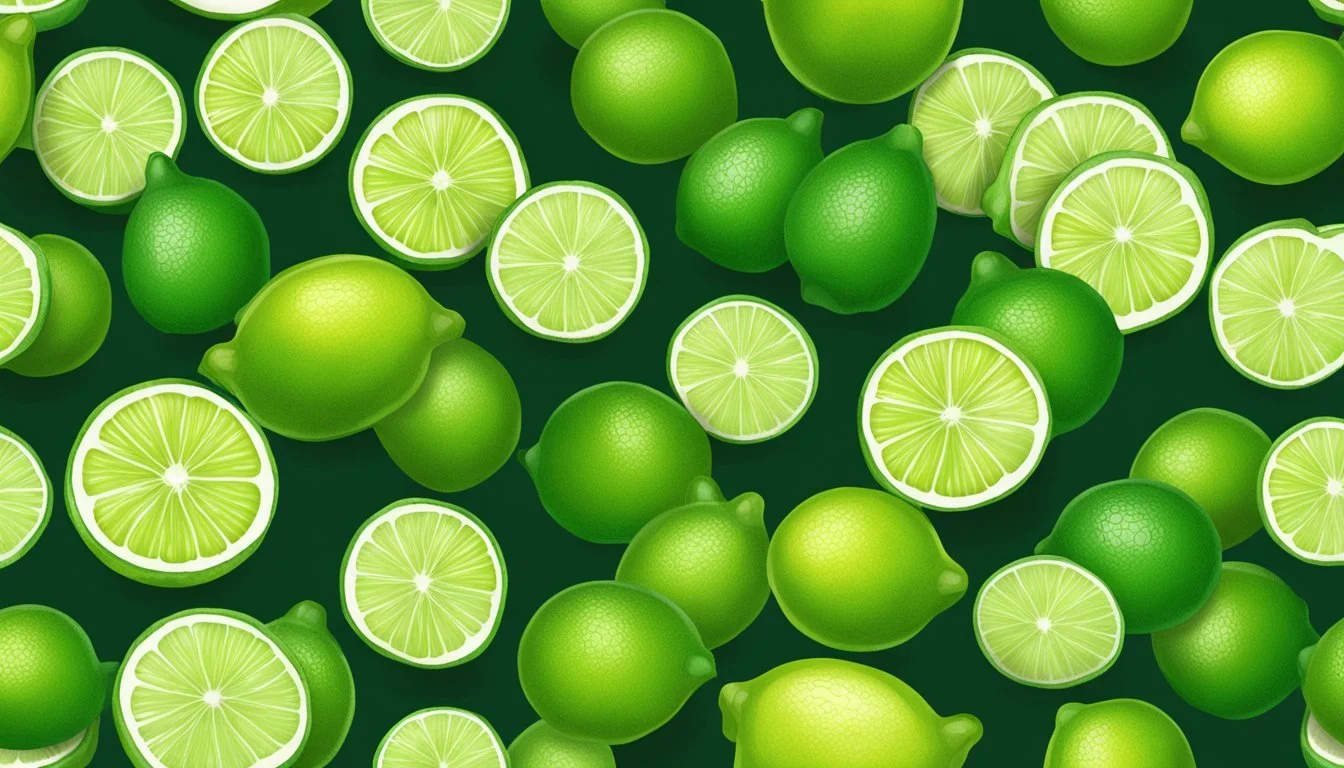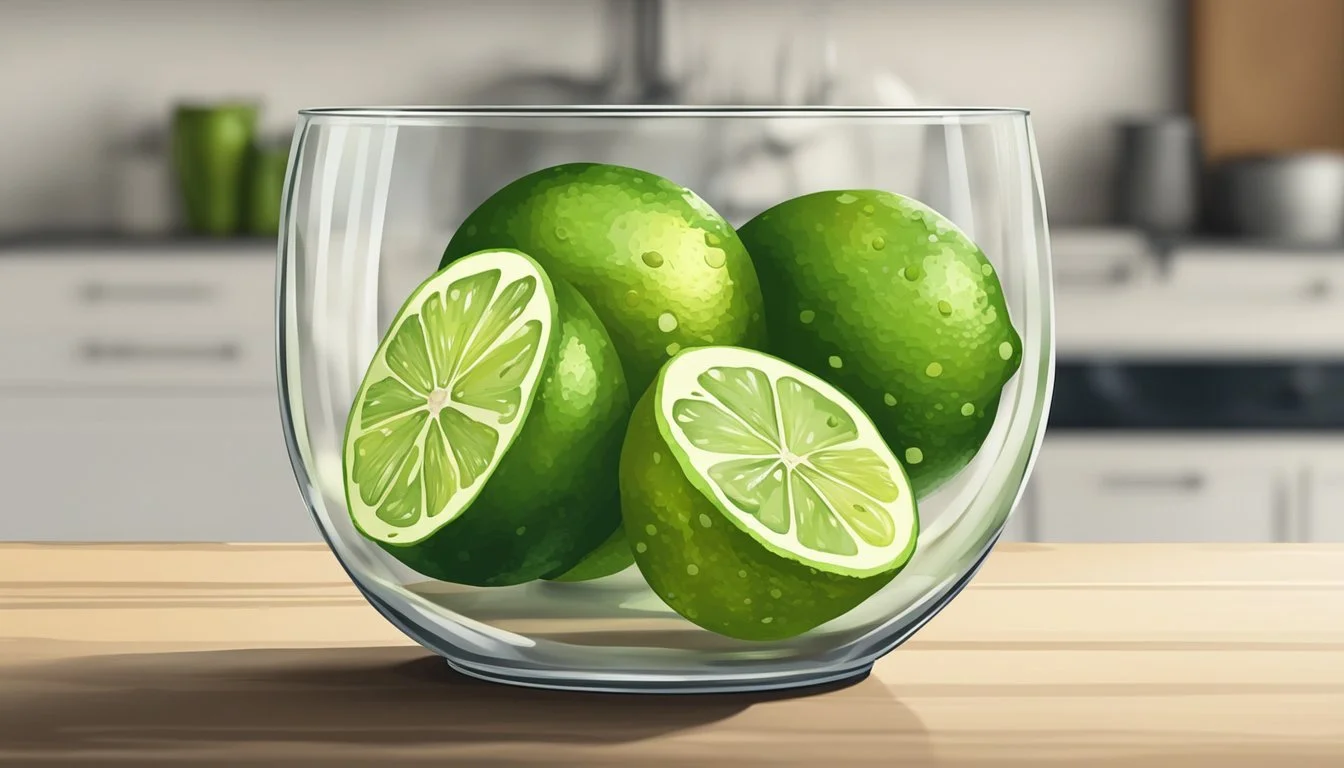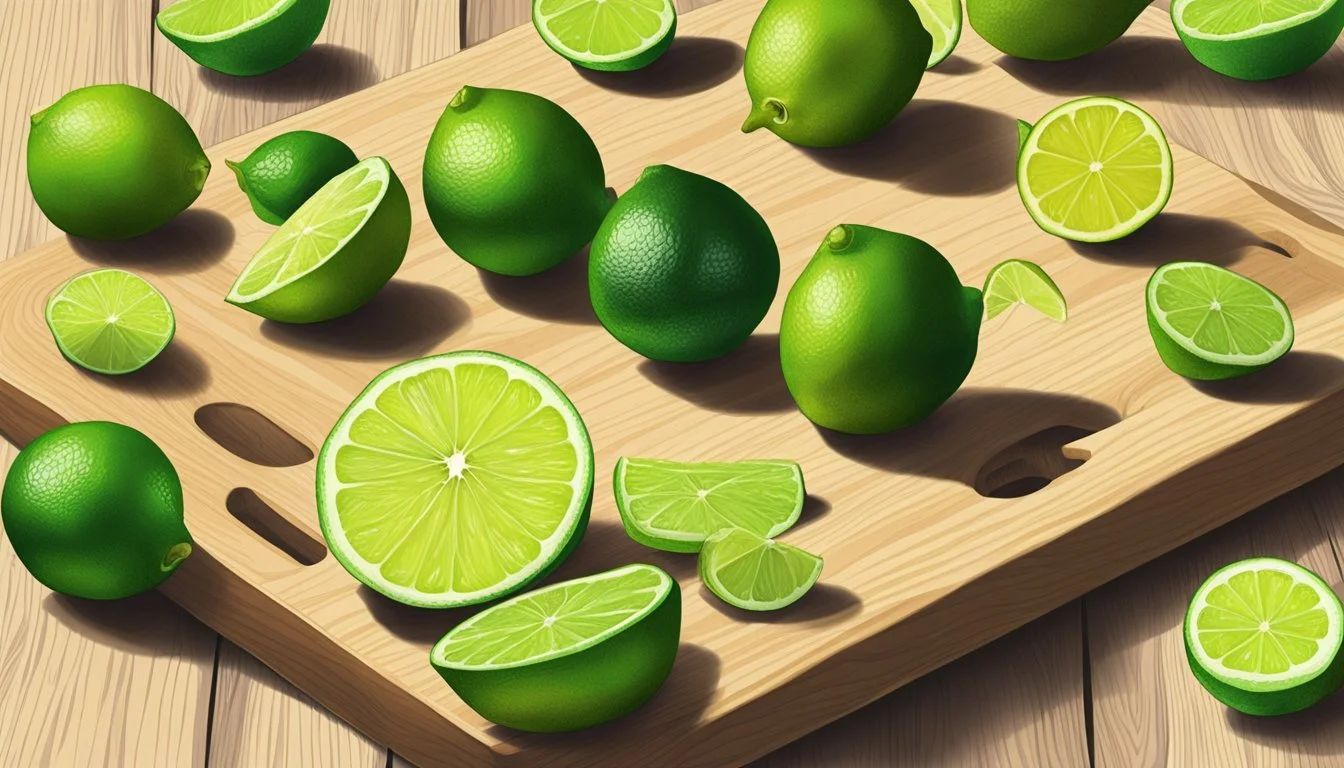Do Limes Spoil?
Understanding Their Shelf Life and Storage
Limes, like other citrus fruits, do have a shelf life and can spoil over time. Whole limes, when stored properly, can last up to a month in the refrigerator and about a week at room temperature. On the other hand, cut or sliced limes have a much shorter lifespan, typically staying fresh for only a few days in the fridge.
Recognizing spoiled limes is crucial for both health and flavor in cooking and drinks. Spoiled limes may exhibit dark spots, mold, weight loss, or an acrid smell. Ensuring limes are stored in airtight containers or plastic bags can help maintain their freshness for longer periods.
Limes are a rich source of vitamin C and antioxidants, making them a valuable addition to any diet. Proper storage and timely usage are key to fully benefiting from the nutrients these fruits offer.
Identifying Fresh Limes
Identifying fresh limes involves checking their color, texture, smell, and taste. These attributes help distinguish between ripe, flavorful limes and those that have spoiled.
Color and Texture
Fresh limes exhibit a vibrant green color. The skin should appear smooth and uniform, without blemishes or discoloration. Any yellowing on the skin can signal that the lime is past its prime. Firmness is another key indicator; a good lime will be firm with a slight yield to pressure.
A ripe lime’s texture should be consistent across its surface, with no soft spots or pockmarks. Limes that feel heavy for their size generally have more juice, indicating freshness. Avoid limes with dry or shriveled skins, as these are often signs of spoilage.
Smell and Taste
The smell of a fresh lime should be fragrant and tangy. If the lime emits an off or sour odor, it is likely spoiled. A sniff test is a quick and effective way to determine the fruit's condition. The scent should be sharp and refreshing, not dull or musty.
Upon tasting, fresh limes offer a tangy, sour taste with an astringent flavor. This sharpness is a good indicator of freshness. Avoid limes that taste bitter, sweet, or otherwise off, as these flavors can indicate that the lime has gone bad. Fresh lime juice should be clear and free from any unpleasant odors.
Factors Affecting Lime Freshness
Lime freshness is influenced by several key factors, including temperature, air circulation, and light exposure. Understanding how these elements play a role can help you keep your limes fresh for as long as possible.
Temperature and Storage
Temperature plays a crucial role in maintaining lime freshness. Limes stored at room temperature can last up to two weeks, but placing them in the refrigerator can extend their shelf life to as long as four weeks.
For even longer storage, limes can be kept in an airtight container or sealed plastic bag and stored in the freezer, which can keep them fresh for up to six months. It's important to ensure that the limes are dry before freezing to prevent ice formation, which can affect the texture and flavor.
Air Circulation and Humidity
Proper air circulation is essential for preventing the growth of mold. Storing limes in a well-ventilated area can help keep them dry and free from spoilage.
High humidity can lead to mold and rot, so it's best to store limes in a dry place. Consider using mesh bags or perforated plastic containers to allow for proper air circulation while keeping humidity levels low.
Light Exposure
Exposure to light can accelerate the spoilage of limes. Direct sunlight can heat up the fruit, causing it to degrade more quickly.
Storing limes in a dark place, such as a pantry or a cupboard, can help maintain their freshness. If refrigeration is not an option, make sure they are kept away from windows and other sources of bright light to extend their shelf life.
Proper Storage Solutions
Proper storage of limes ensures they stay fresh and retain their flavor. For short-term use, certain methods will maintain their quality. For long-term preservation, different techniques will keep them usable.
Short-Term Solutions
Whole limes should be kept at room temperature if they will be used within a week. Place them in a basket or on the counter. Ensure there's good air circulation.
For refrigeration, store whole limes in the crisper or vegetable drawer. Use a sealed container or plastic bag to prevent moisture loss.
Store cut limes in an air-tight container. Keep the container in the fridge to maintain freshness for a few days. Lime wedges and slices should also be stored in a sealed bag or wrapped in plastic wrap.
Long-Term Preservation
To store limes for more extended periods, freezing is effective. First, wash and dry the limes thoroughly. Place whole limes in a freezer bag and remove as much air as possible before sealing.
For lime juice, pour it into an ice cube tray. Once frozen, transfer the cubes to a ziplock bag for easy access.
Lime peels can also be frozen. Store them in a sealed bag in the freezer to maintain their zest. This method ensures the limes, either whole, juiced, or peeled, remain usable for several months.
Signs of Spoilage
Limes can exhibit various signs when they begin to spoil. These indicators can be visual, tactile, or olfactory in nature, helping identify whether the lime is no longer suitable for use.
Visual Indicators
Visually inspecting a lime is one of the first steps in determining spoilage. A bad lime often shows discoloration on its outer skin, ranging from brown spots to dark gouges. Mold may also appear in various colors such as white, green, dark brown, or black, and it can look either furry or wet.
Limes may also appear shriveled or wrinkled, with a dull exterior indicating dryness. Other signs include visible blemishes and any unusual discolored skin patterns that cannot be wiped off easily with a cloth.
Tactile Clues
Touching the lime can provide additional clues about its freshness. A spoiled lime often feels soft and may have wet pockmarked areas or mushy spots upon gentle pressing. Healthy limes should be firm to the touch; soft spots are a clear indicator of spoilage.
In extreme cases, the lime may feel unusually lightweight due to the internal drying out, while a fresh lime will have some heft to it. Avoid limes with any noticeable indents or cuts as these can be entry points for bacteria and mold.
Olfactory Signs
The smell of a lime can be a decisive factor in determining its condition. Fresh limes have a pleasant, citrusy aroma that is easily recognizable. When a lime starts to spoil, it emits a foul smell that can be distinctly unpleasant and sour.
Any off smells that deviate from the normal citrus scent imply that the lime has gone bad. Keeping an olfactory check along with visual and tactile inspections ensures that only fresh, flavorful limes are used.
Determining Shelf Life
The shelf life of limes varies significantly based on storage conditions and handling. Understanding these variables helps ensure optimal freshness and usability.
Typical Lifespan
Fresh limes have a shelf life that changes depending on storage methods. At room temperature, they can last about 1-2 weeks before showing signs of spoilage. In contrast, storing limes in the refrigerator can extend their freshness up to 4 weeks.
Once limes are cut, the shelf life decreases to 2-3 days. They should be kept in an airtight container in the refrigerator to maintain their freshness. Considering the shelf life at various stages helps in planning usage and minimizing waste effectively.
Factors Affecting Expiration
Several factors influence the expiration date of limes:
Storage Location: Whether limes are stored at room temperature or in a fridge significantly affects their shelf life. Cooler temperatures slow down the spoiling process.
Ethylene Gas: Limes stored near ethylene-producing fruits like apples or bananas spoil faster.
Container Type: Airtight containers or bags can help maintain moisture for cut limes, extending their usability.
Freshness at Purchase: Starting with ripe limes from the grocery store ensures a longer period before spoilage occurs.
Each factor plays a crucial role in the longevity of limes and helps in effectively managing and maximizing their shelf life.
Usage and Culinary Applications
Limes play a versatile role in both cooking and beverages, appreciated for their tangy flavor and refreshing zest. Their acidic juice and zest enhance a wide range of dishes and drinks.
Cooking and Baking
In cooking, limes are popular for their freshness and acidic kick. They are commonly used in marinades for meat and fish, helping to tenderize and infuse a tangy flavor. Lime juice is a key ingredient in many salsas and dressings, adding a bright note to salads and grilled dishes.
Baking also benefits from the citrus fruit, as lime zest and juice add a unique flavor to desserts like key lime pie, cookies, and cakes. Lime's acidity can balance sweetness, making it a preferred choice for homemade lime treats.
Beverages and Cocktails
Limes are quintessential in the world of beverages and cocktails. Freshly squeezed lime juice is a staple in many classic cocktails such as Margaritas, Mojitos, and Gin and Tonics. Beyond alcohol, lime juice is a popular addition to non-alcoholic drinks like iced tea and lemonade, imparting a tangy freshness.
In addition to juice, lime wedges are often used as a garnish, enhancing the aesthetic and flavor of drinks. The use of lime in beverages is not just limited to taste; its natural properties help balance flavors and reduce bitterness.
Knowing When to Discard Limes
Limes, like all fruits, can go bad. Recognizing the signs of spoilage is key to ensuring they are safe to consume.
Signs of Spoiled Limes:
Mold: Look for white, green, dark brown, or black mold. It may appear furry or wet, typically on the skin but sometimes inside as well.
Soft Spots: Bad limes may have mushy or wet, pockmarked areas.
Discoloration: Overripe or spoiled limes might turn yellow or brown.
Bad Smell: A foul or sour smell is a clear indicator of spoilage.
Less Juice: Spoiled limes often yield less juice and may feel lightweight.
Storage Tips:
Store whole limes at room temperature or in the fridge to extend their shelf life.
Cut limes should be kept in an airtight container in the fridge.
Avoid storing limes with fruits that produce ethylene gas, such as apples and bananas.
Ideal Lime Characteristics:
Firmness: Fresh limes should be slightly firm, not hard.
Skin Texture: Look for smooth skin without significant blemishes.
When to Discard Limes:
If a lime exhibits any of the signs of spoilage mentioned above, it's best to discard it. Consuming spoiled limes can lead to unpleasant taste and potential health risks. It's always safer to use limes when they are at their freshest, typically when they are still green and firm.
Proper storage and regular checks can help in keeping limes fresh longer, ensuring they remain a tasty and safe addition to your culinary endeavors.
Health Benefits and Nutritional Value
Limes provide significant health benefits and are known for their high vitamin C content. One lime can supply around 22% of the daily recommended intake of this vital nutrient, which supports immune system function and helps the body fight infections.
These small, green fruits are also rich in antioxidants, which protect cells from damage caused by free radicals. Regular consumption of limes may contribute to heart health by preventing plaque formation in arteries and reducing blood pressure.
Nutritional Content of a Lime:
Nutrient Amount per Lime Calories 20 Sodium 1 mg Total Carbs 7 g Dietary Fiber 2 g Sugar 1 g Protein 0.47 g Vitamin C 19.5 mg
Limes also aid in iron absorption, which is important for preventing anemia. The citric acid found in limes enhances the absorption of dietary iron, especially from plant-based sources.
Other notable nutrients in limes include potassium, which is essential for maintaining healthy blood pressure levels, vitamin B6, folate, and calcium. These contribute to overall well-being by supporting various bodily functions.
Regular consumption of limes can promote healthy skin due to their high vitamin C and antioxidant content. These nutrients help repair and rejuvenate the skin, giving it a healthy glow.
Incorporating green limes into your diet can be an easy and effective way to boost nutrient intake. They can be added to beverages, marinades, and dressings, making them a versatile and beneficial fruit.
Common Lime Varieties
Bearss Lime: Also known as Persian lime, the Bearss lime is a popular variety. It is larger than Key limes and has an oval shape. These green limes are less acidic and grow on thornless lime trees. They typically reach up to 2.5 inches in diameter.
Key Lime: Smaller and more acidic, Key limes are known for their distinctive flavor. They are more spherical and have a thin, smooth skin. They are often used in desserts and beverages.
Kaffir Lime: Known for its bumpy skin and aromatic leaves, the Kaffir lime is essential in many Southeast Asian cuisines. The leaves are often used as a spice, while the fruit itself is less commonly used due to its bitter flavor.
Mexican Lime: Similar to Key limes, Mexican limes are small, green limes. They are highly acidic and have a strong aroma. They are often used in traditional Mexican dishes.
Finger Lime: This unique variety has elongated, finger-like shape. Inside, it contains small, caviar-like vesicles that burst with citrus flavor. Finger limes are often used as a garnish or in gourmet recipes.
VarietyCharacteristics Bearss LimeLarge, oval, less acidic Key LimeSmall, spherical, very acidic Kaffir LimeBumpy skin, aromatic leaves Mexican LimeSmall, highly acidic Finger LimeLong, caviar-like vesicles
Many lime varieties are used in culinary and beverage applications. They not only enhance flavor but also contain preservatives. These limes grow on different types of lime trees and can be distinguished by their size, shape, and acidity level.










